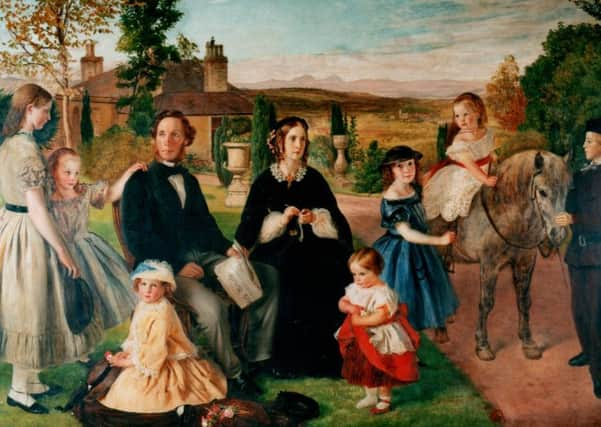Coal master’s legacy is dog walkers’ destination


It’s well worth going there for the fantastic view alone but it is also yet another stroll down one of the byways of Falkirk’s history.
Today there are few obvious signs of the great house that stood here until the 1960s, the home of the famous coal master John Wilson, one of Falkirk’s best known and most influential Victorians.
Advertisement
Hide AdAdvertisement
Hide AdJohn Wilson’s father, Robert, owned very successful coal pits in Banton near Kilsyth and in 1828 decided to extend his empire.
He was attracted to South Bantaskine not only by the rich coal seams but because his family had taken part on the Jacobite side in the 1746 battle fought over the same land.
The ironworks at Carron was hungry for vast quantities of coal and there were large fortunes to be made.
When Robert died in 1836 John, then aged 21, took over and he set about developing the business and landscaping the estate.
Advertisement
Hide AdAdvertisement
Hide AdIn 1848 he further enhanced his influence by marrying Mary Russel, daughter of the mighty James Russel of Arnotdale, Falkirk’s leading lawyer and man of business.
It was a long and happy marriage and in a diary entry John Wilson tells us: “Prudence prevents me expressing more than the fact, in reference to my bosom friend, that God by these espousals hath blessed us with a happy home”.
It was certainly a busy place because within a relatively few years the couple had produced eight daughters and a son and the original house was far too small to hold them.
The result was South Bantaskine House which was completed around 1860.
Advertisement
Hide AdAdvertisement
Hide AdEver conscious of the Jacobite connections John Wilson commissioned Ballantine’s of Edinburgh to produce the famous stained glass windows which are now in the Howgate shopping centre.
Like most men in his social position he was an active churchman and closely involved with the West Church on the Tanner’s Brae.
By all accounts he was more concerned for the welfare of his colliers than many coal owners of the period though that wouldn’t have been too hard.
He was a close friend of Dr Robert Moffat the famous African missionary and father-in-law of David Livingstone.
Advertisement
Hide AdAdvertisement
Hide AdMoffat was educated in Carronshore and had never forgotten his Falkirk roots, staying at South Bantaskine on many occasions.
Back in 1846 John Wilson decided to invest in Falkirk and the result was Wilson’s Buildings opposite the steeple.
It was used for shops, offices, meetings and performances but sadly today it stands empty like too many others.
Not long ago it was home to Anne Summers and I wonder what the grave Victorian kirkman would have made of that!
Advertisement
Hide AdAdvertisement
Hide AdJohn Wilson was deeply grieved by the early death of his only son from tuberculosis aged just 22 but his surviving girls – “my forty foot of daughters” he called them – were able to carry on with the business when their father himself died in 1881.
Bessie, Nell and Georgina never married and lived on in the house for many years and were involved in a whole variety of different good works in the Falkirk area.
During the war the house was used by Polish officers but it didn’t survive the nationalisation of the coal mines in 1946.
It lay empty for years before the National Coal Board brought in the bulldozers.
Advertisement
Hide AdAdvertisement
Hide AdToday only the walled garden with its modern allotments survive along with a bridge and odd fragments that link back to the coal mining days.
A sad end to an interesting and important part of the Falkirk story.